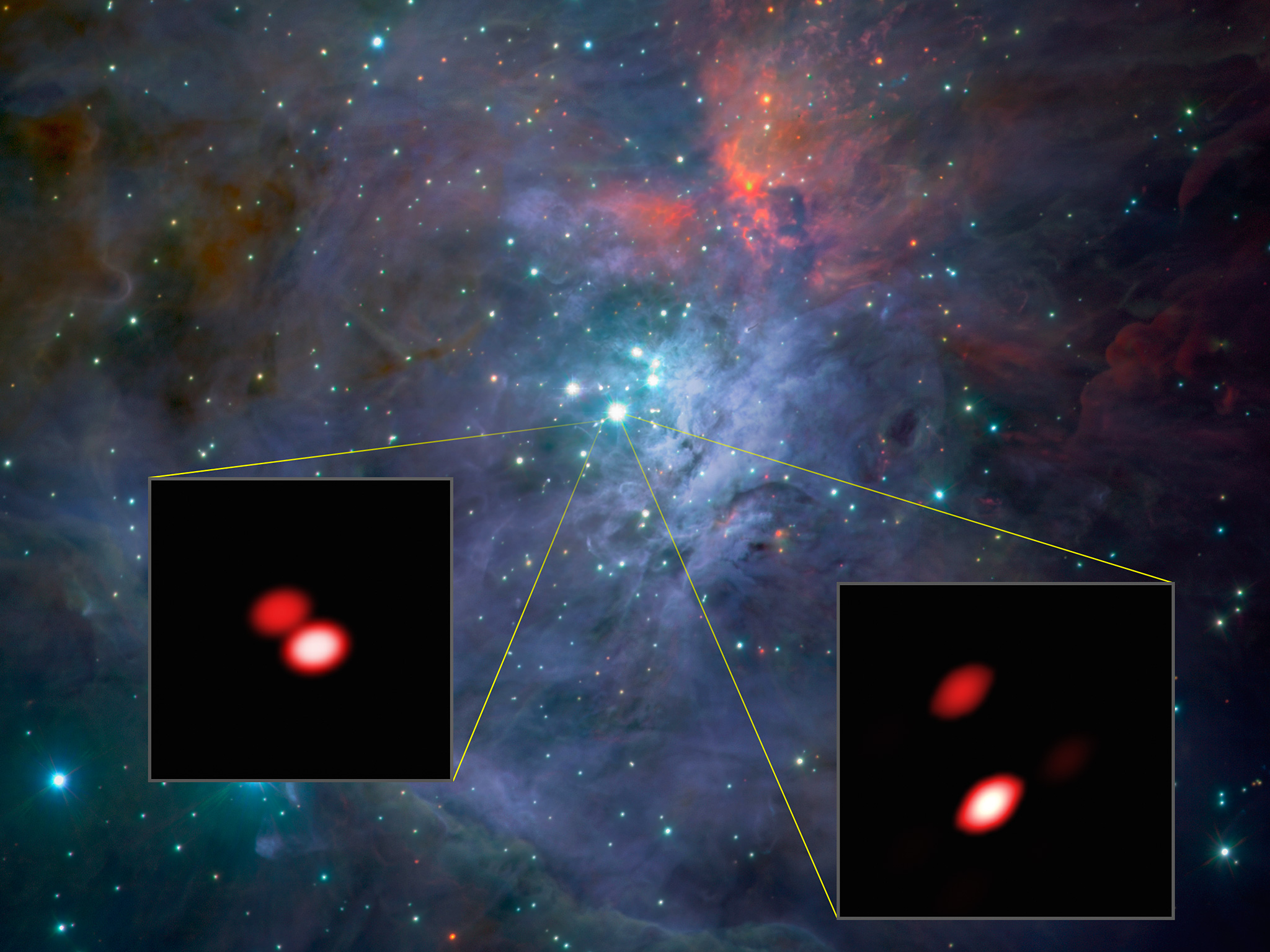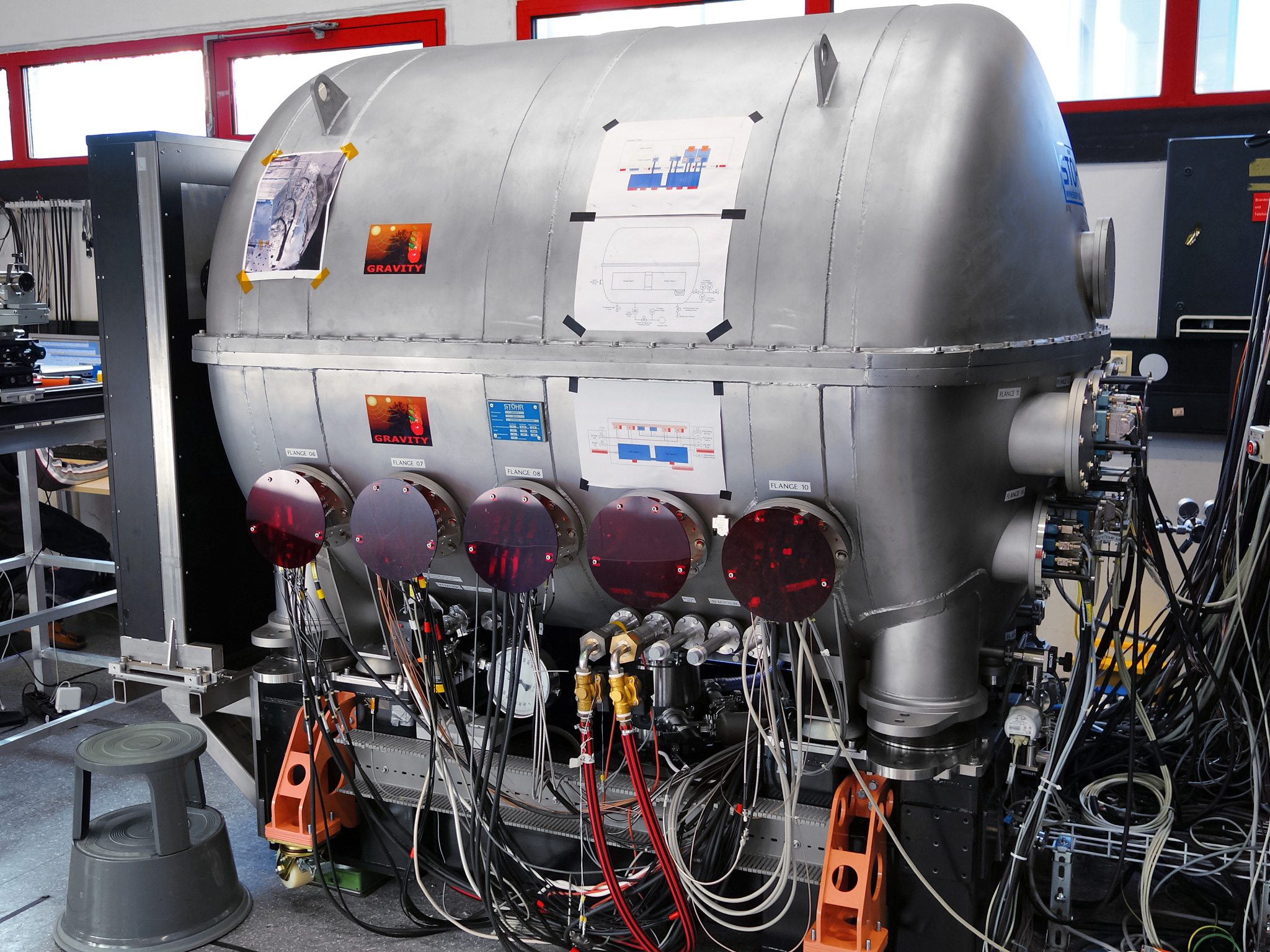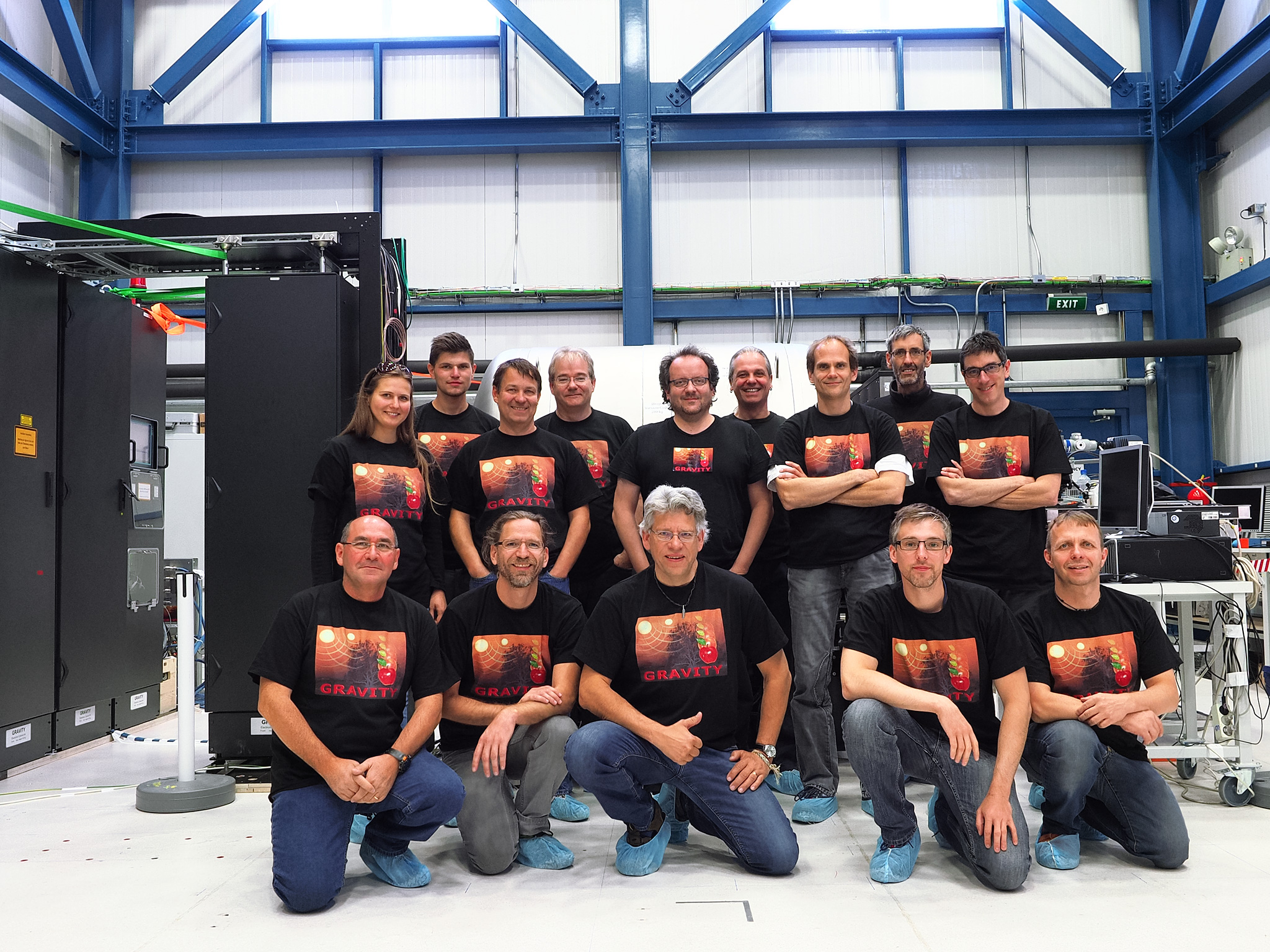Surprise! Black-Hole Instrument Finds One Star That's Actually Two (Video)

A new instrument designed to study the extreme environments around black holes has observed the heavens for the first time — and made a surprising discovery.
The Gravity instrument, which researchers recently installed at the European Southern Observatory's (ESO) Very Large Telescope (VLT) in northern Chile, has achieved "first light," eyeing the Trapezium Cluster, a well-studied group of bright, young stars in the Orion star-forming region.
During the course of this test, Gravity — which combines the light gathered by multiple telescopes to form a virtual observatory up to 660 feet (200 meters) wide, using a method called interferometry — found that the star Theta Orionis F is actually two separate stars, the researchers said. They also created a video to zoom in on the double star revealed by Gravity.

"During its first light, and for the first time in the history of long baseline interferometry in optical astronomy, Gravity could make exposures of several minutes — more than a hundred times longer than [was] previously possible," Frank Eisenhauer, of the Max Planck Institute for Extraterrestrial Physics in Germany, said in a statement.

"Gravity will open optical interferometry to observations of much fainter objects, and push the sensitivity and accuracy of high angular resolution astronomy to new limits, far beyond what is currently possible," Eisenhauer added.Gravity's main task will involve studying what happens near supermassive black holes — those that lie at the hearts of other galaxies, as well as the one at the center of our own Milky Way. (Black holes exert a tremendous gravitational pull, which explains the instrument's name.)
Scientists will also use Gravity to probe exoplanets, image the surfaces of stars, and examine mass accretions and jets — phenomena that occur near newborn stars and supermassive black holes, the researchers said.
During the recent tests, Gravity was hooked up to the VLT's four 5.9-foot (1.8 m) Auxiliary Telescopes. Researchers plan further trials using the four 26.2-foot (8 m) VLT Unit Telescopes later this year, ESO officials said.
Get the Space.com Newsletter
Breaking space news, the latest updates on rocket launches, skywatching events and more!
The Max Planck Institute for Extraterrestrial Physics leads the Gravity consortium, which includes six other partner organizations in France, Germany and Portugal.
Follow Elizabeth Howell @howellspace, or Space.com @Spacedotcom. We're also on Facebook and Google+. Originally published on Space.com.
Join our Space Forums to keep talking space on the latest missions, night sky and more! And if you have a news tip, correction or comment, let us know at: community@space.com.

Elizabeth Howell (she/her), Ph.D., was a staff writer in the spaceflight channel between 2022 and 2024 specializing in Canadian space news. She was contributing writer for Space.com for 10 years from 2012 to 2024. Elizabeth's reporting includes multiple exclusives with the White House, leading world coverage about a lost-and-found space tomato on the International Space Station, witnessing five human spaceflight launches on two continents, flying parabolic, working inside a spacesuit, and participating in a simulated Mars mission. Her latest book, "Why Am I Taller?" (ECW Press, 2022) is co-written with astronaut Dave Williams.









